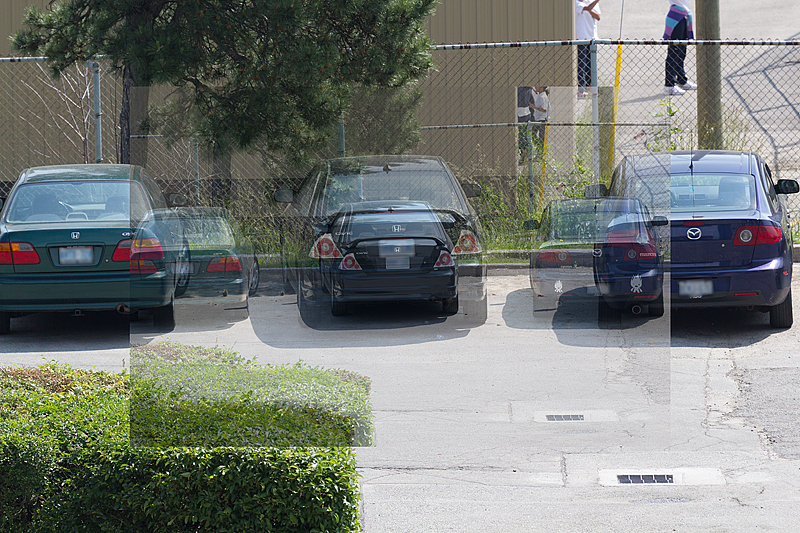Digital cameras come in a wide variety of shapes and sizes. They also come with a lot of confusion and marketing hype about the sensor size, number of mega-pixels and crop factor, which is presented as a magic number that makes a lens longer when fitted to a camera with a smaller sensor.
A pixel is an element of the picture, some pictures are made of dots and some of little rectangles or squares. If you look at your monitor or a newspaper photo with a magnifying glass you will be able to see how the image was constructed. The camera sensor has a lot of photo diodes arranged in rows that measure the brightness of the light shining on them, through the lens. Sensors can be made in different ways, the most common are CCD and CMOS which denote the electrical construction of the sensor. One type of sensor, the Foveon, is arranged to obtain a value for red, green and blue all at the same photo diode location using three layers of photo diodes, while the rest only detect the brightness for one colour at each location. The sensor is arranged as a wafer with a number of layers which include a low pass filter to reduce moire patterns, a micro lens which directs light into the photo diode, a coloured filter which has one of three colours assigned to the location of each photo diode and the photo diode itself. There are also layers that carry electricity.
A sensor with larger physical dimensions will usually produce a better image. This is because a larger sensor has room for larger photo diodes and larger photo diodes can provide a better response when struck by light. Since larger photo diodes can receive more light, they have a better signal to noise ratio. This results in better picture quality.
Since a photo diode can only indicate the amount of light, software is used to reference the photo diode location and assign a colour. By knowing the colour and amount of light at each photo diode, software can create an accurate representation of the image. Software can also remove some of the noise from an image while retaining detail. As software and computer processing power are improved, better images may become available from smaller sensors, but the larger sensors will benefit from the same advances so for any generation of products the larger sensor is expected to out perform the smaller sensor.
Some of the camera advertizing and reviews talk about lenses having a magnification factor when used with bodies containing APS-C sized sensors, DX format sensors or even APS-H sized sensors. Some of the articles talk about a lens not being designed for use with 35 mm film cameras and some talk about a lens that is stamped 100 mm but is 150 mm, 160 mm or even 200 mm equivalent when used with some model of body. Even Canon's spec sheet for the Rebel T1i says "Canon EF lenses including EF-S lenses (35mm-equivalent focal length is approx.1.6x the lens focal length)". What are they talking about?
Rather than get into a big technical discussion, let's note a couple of points then look at a picture which illustrates what is happening. 35 mm film cameras and digital SLR cameras with full frame sensors capture an image that is 36 mm X 24 mm (35 mm film is 35 mm wide including the sprocket holes, leaving 24 mm for the image), most digital SLR cameras have a smaller sensor which may be 27.9 X 18.6 mm (APS-H), 23.6 mm X 15.8 mm (DX), 22.2 mm X 14.8 mm (APS-C) or 17 mm X13 mm (Four Thirds). Some lenses are made specifically for the smaller sensors since they can be made smaller, lighter and less expensively. These lenses typically do not work with film bodies or full sized sensors since the image circle is too small. Below is a picture of two lenses, the one on the left is a Sigma 18-250 mm zoom lens for an APS-C sensor body, the one on the right is a Canon 28-300 mm zoom for a full frame body. Notice the size of the element closest to the camera. Lenses for full frame can be used on bodies with smaller sensors, usually lenses for smaller sensor bodies can not be used on full frame bodies although Nikon does support using DX lenses on some full frame bodies but at reduced image size.
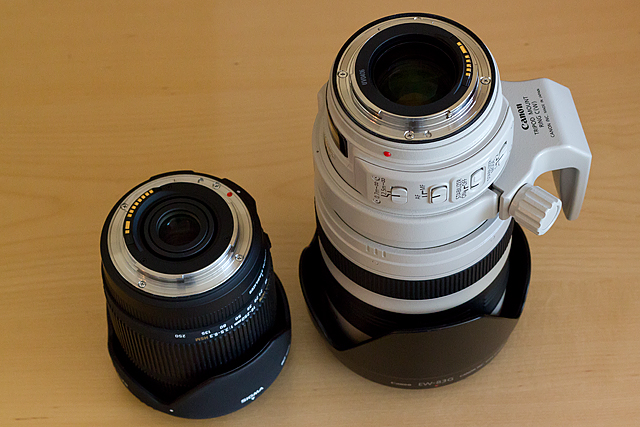
Crop sensor Sigma 18-250 mm zoom lens and full frame Canon 28-300 mm zoom lens
Not all pixels are created equal, but on any given medium they are displayed equally.
Below is a view of two pictures taken through a Canon 100-400 mm zoom lens at 400 mm. The photos were taken a couple of minutes apart using the same lens and focal length but different bodies. The photos were loaded into Photoshop Elements and placed one on top of the other with the opacity of the top photo lowered to ease lining up the edges. A line was drawn around the smaller photo to make the edges easier to see. The photo is a screen capture converted to a JPEG file using Microsoft Paint.
Click the image to see a larger version
The smaller photo was taken with an 8 Megapixel Canon OES 30D which has a 22.5 mm X 15.0 mm APS-C sized sensor. The background photo was taken with a 21 Megapixel Canon OES 1Ds Mk III with a full sized sensor. Due to the smaller sensor in the 30D, the image is essentially cropped relative to the image available from a full sized sensor. When displayed or printed at less than full size, the image from the smaller sensor appears to be magnified, or, the image from the full frame sensor appears smaller because more pixels are available and must fit in the same frame. The crop factor or magnification factor is said to be 1.6. The value of having this number is to allow easy calculation of the focal length required to see the same field of view with a full frame camera or a crop sensor camera. For instance a 10 mm lens on an APS-C sensor camera will produce the same field of view as a 16 mm lens on a full frame sensor camera, but the magnification of the images when viewed at 100% will not be the same unless both sensors have the same number of pixels.
Viewed at 100%, the number of pixels on the sensor determine the magnification factor provided by the sensor, relative to some standard sensor. The table below shows current offerings from Canon and Nikon sorted by magnification factor based on horizontal pixels in the image file and sensor dimensions.
The notion of a 1.5 magnification factor may have come from Nikon offering, within a few pixels, the same number of pixels on their full frame body as on their crop sensor body and since the DX sensor is smaller, the pixels must be smaller and closer together. The result is that viewed at 100% the image is magnified. But, the D3x has roughly 42% more pixels in each direction than the D3s. If the D3s image is used as the reference, the same lens on the D3x will appear longer if pixels are viewed at 100% even though both cameras have a full frame sensor, and yet, the field of view will be the same for both cameras.
Canon APS-C sensor cameras are said to have a 1.6 crop factor, which is useful for determining field of view, but less useful for determining how much magnification will be provided by the sensor since Canon introduced sensors with different numbers of pixels within and between sensor sizes. The original 5D sensor was 35.8 X 23.9 mm and 12.8 Mpx, giving it a magnification factor of 1.32 when compared to the Nikon D3s.
| Model | Sensor Size | Megapixels | Pixels/mm | Factor |
| Canon 7D | APS-C | 18 | 232.47 | 1.97 |
| Canon 60D | APS-C | 18 | 232.47 | 1.97 |
| Canon Rebel T3i | APS-C | 18 | 232.47 | 1.97 |
| Canon Rebel T2i | APS-C | 19 | 232.47 | 1.97 |
| Canon Rebel T1i | APS-C | 15.1 | 213.09 | 1.80 |
| Nikon D7000 | DX | 16.2 | 208.81 | 1.77 |
| Nikon D3100 | DX | 14.2 | 199.48 | 1.69 |
| Canon Rebel T3 | APS-C | 12.2 | 194.18 | 1.54 |
| Nikon D300s | DX | 12.3 | 181.69 | 1.54 |
| Nikon D90 | DX | 12.3 | 181.69 | 1.54 |
| Nikon D5000 | DX | 12.3 | 181.69 | 1.54 |
| Canon 1D Mk IV | APS-H | 16.1 | 175.48 | 1.48 |
| Canon Rebel Xs | APS-C | 10.1 | 175.13 | 1.48 |
| Nikon D3x | FX | 24.5 | 168.47 | 1.43 |
| Nikon D3000 | DX | 10.2 | 164.07 | 1.39 |
| Canon 1Ds Mk III | Full | 21.1 | 156 | 1.32 |
| Canon 5D Mk II | Full | 21.1 | 156 | 1.32 |
| Canon 30D | APS-C | 8 | 155.73 | 1.32 |
| Canon 5D Mk I | Full | 12.8 | 122.01 | 1.03 |
| Nikon D3s | FX | 12.1 | 118.22 | 1 |
| Nikon D700 | FX | 12.1 | 118.22 | 1 |
It is interesting to note that while the crop factor advertised for the Canon 1D Mk IV is 1.3, the magnification factor is only 1.12 when compared to the 1Ds Mk III because the 1D Mk IV has fewer pixels on the smaller sensor.
This updated table contains information for cameras available from Canon and Nikon in early 2013
| Model | Sensor Size | Megapixels | Sensor Width | Sensor Height | Pixels Wide | Pixels High | Pixels/mm | Factor |
| Nikon D3200 | DX | 24.2 | 23.2 | 15.4 | 6016 | 4000 | 259.31 | 2.19 |
| Nikon D7100 | DX | 24.1 | 23.5 | 15.6 | 6000 | 4000 | 255.32 | 2.16 |
| Nikon D 5200 | DX | 24.1 | 23.5 | 15.6 | 6000 | 4000 | 255.32 | 2.16 |
| Canon 7D | APS-C | 18 | 22.3 | 14.9 | 5184 | 3456 | 232.47 | 1.97 |
| Canon 60D | APS-C | 18 | 22.3 | 14.9 | 5184 | 3456 | 232.47 | 1.97 |
| Canon Rebel T4i | APS-C | 18 | 22.3 | 14.9 | 5184 | 3456 | 232.47 | 1.97 |
| Canon Rebel T3i | APS-C | 18 | 22.3 | 14.9 | 5184 | 3456 | 232.47 | 1.97 |
| Canon Rebel T2i | APS-C | 19 | 22.3 | 14.9 | 5184 | 3456 | 232.47 | 1.97 |
| Canon M | APS-C | 18 | 22.3 | 14.9 | 5184 | 3456 | 232.47 | 1.97 |
| Nikon D7000 | DX | 16.2 | 23.6 | 15.6 | 4928 | 3264 | 208.81 | 1.77 |
| Nikon D5100 | DX | 16.2 | 23.6 | 15.6 | 4928 | 3264 | 208.81 | 1.77 |
| Nikon D800 | FX | 36.3 | 35.9 | 24 | 7360 | 4912 | 205.01 | 1.73 |
| Nikon D3100 | DX | 14.2 | 23.1 | 15.4 | 4608 | 3072 | 199.48 | 1.69 |
| Canon Rebel T3 | APS-C | 12.2 | 22 | 14.7 | 4272 | 2848 | 194.18 | 1.54 |
| Nikon D90 | DX | 12.9 | 23.6 | 15.8 | 4288 | 2848 | 181.69 | 1.54 |
| Nikon D5000 | DX | 12.3 | 23.6 | 15.8 | 4288 | 2848 | 181.69 | 1.54 |
| Nikon D300s | DX | 12.3 | 23.6 | 15.8 | 4288 | 2848 | 181.69 | 1.54 |
| Nikon D3X | FX | 24.5 | 35.9 | 24 | 6048 | 4032 | 168.47 | 1.43 |
| Nikon D600 | FX | 24.3 | 35.9 | 24 | 6016 | 4016 | 167.58 | 1.42 |
| Nikon D3000 | DX | 10.2 | 23.6 | 15.8 | 3872 | 2592 | 164.07 | 1.39 |
| Canon 5D Mk III | Full | 22.3 | 36 | 24 | 5760 | 3840 | 160.00 | 1.35 |
| Canon 6D | Full | 20.2 | 35.8 | 23.9 | 5472 | 3648 | 152.85 | 1.29 |
| Canon 1Dx | Full | 18.1 | 36 | 24 | 5184 | 3456 | 144.00 | 1.22 |
| Nikon D4 | FX | 16.2 | 36 | 23.9 | 4928 | 3280 | 136.89 | 1.16 |
| Nikon D3s | FX | 12.1 | 36 | 23.9 | 4256 | 2832 | 118.22 | 1.00 |
The advertised crop factor for both the Canon 30D and Canon Rebel T2i is 1.6. If the Canon 1Ds Mk III sensor is used as the reference, the magnification factor of the sensor in the Canon Rebel T2i is 1.49. The factor for the Canon 30D is 1. The effect of this can be seen in the following images:
 1Ds Mk III, 300 mm, scaled to fit window |  1Ds Mk III, 300 mm, 100% crop |
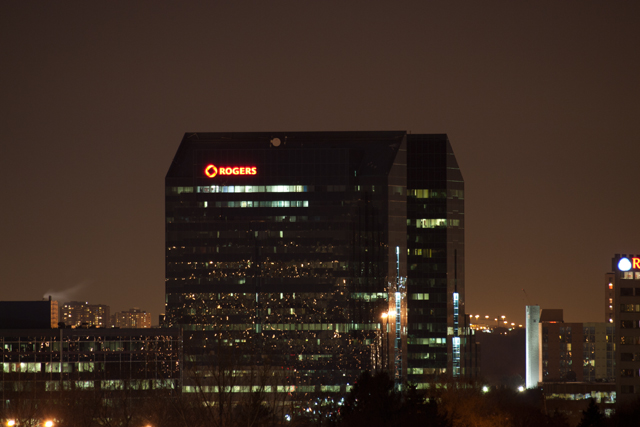 30D, 300 mm, scaled to fit window | 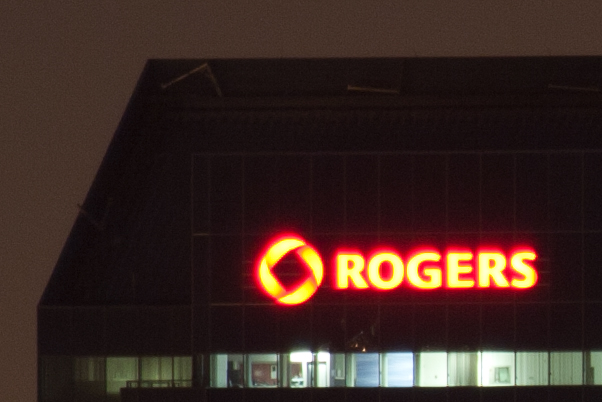 30D, 300 mm, 100% crop |
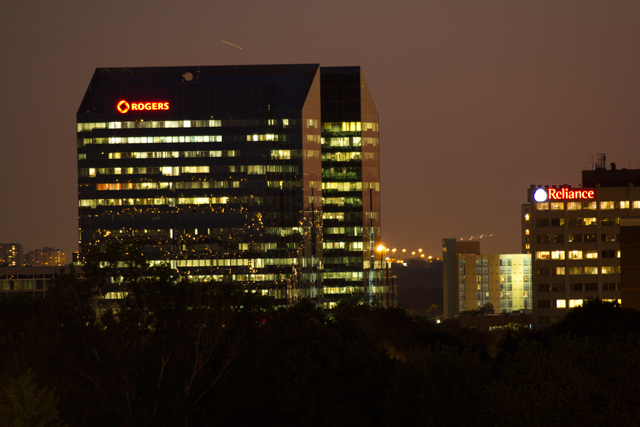 Rebel T2i, 300 mm, scaled to fit window | 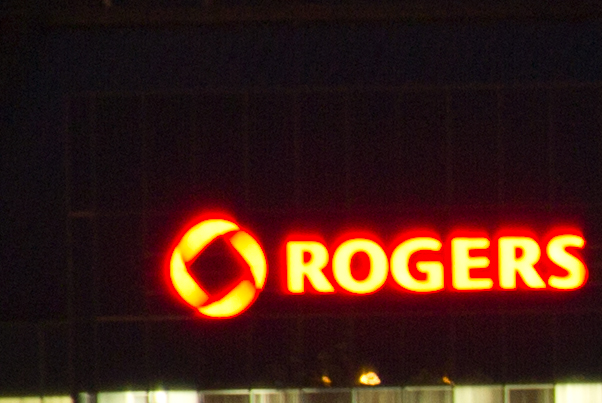 Rebel T2i, 300 mm, 100% crop |
 1Ds Mk III, 300 mm + 2X teleconverter, scaled to fit window |  1Ds Mk III + 2X teleconverter, 100% crop |
The first image above, taken with the 1Ds Mk III, looks like a shorter lens was used than the 300 mm stated. Compare the image to the one below it which also used a 300 mm lens. The images to the right show 100% crops taken from the images on their left and the letters in the top two are extremely close to the same size because both cameras while having different sensor sizes have the same number of pixels per mm. The full images shown on the left are not displayed at 100% and since the top picture has more pixels, objects in the image appear smaller.
The bottom set of images were taken using a full frame camera and a 2X teleconverter which is another lens that fits between the regular lens and the body. It doubles the focal length of any lens it is used with, but it requires a couple of extra stops of light.
The summary is:
- A larger photo receptor (photo diode) will have less noise than a smaller photo receptor, all other things being equal.
- The physical size of the sensor does not affect the focal length of the lens, although the density of pixels (photo diodes)
will affect the magnification of the image.
- Sensor size affects the field of view because smaller sensors crop off the edges, relative to a full frame sensor.
- As long as the image has enough pixels and it is not going to be displayed at its full size, it can be cropped
to give the appearance that a longer lens was used.
Here is another composite, the 8 Mpx image from a Canon 30D was laid on top of the 18 Mpx image from a Canon Rebel T2i. The opacity of the 8 Mpx image was reduced to 50% so the underlying image can be seen as well. Both images were taken through a Canon 100-400 mm f4.5-5.6 L IS USM lens at 400 mm. Both camera bodies contain an APS-C sized sensor.
